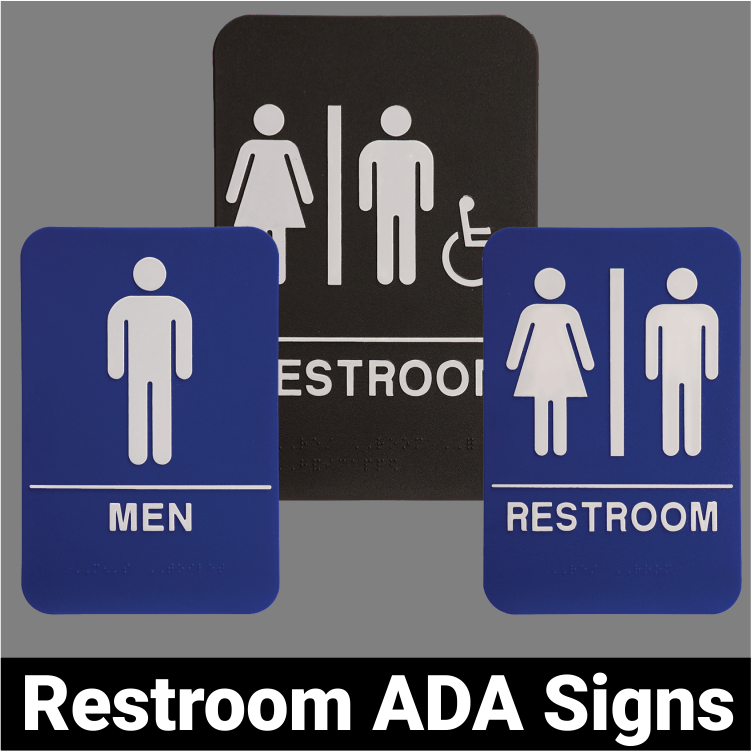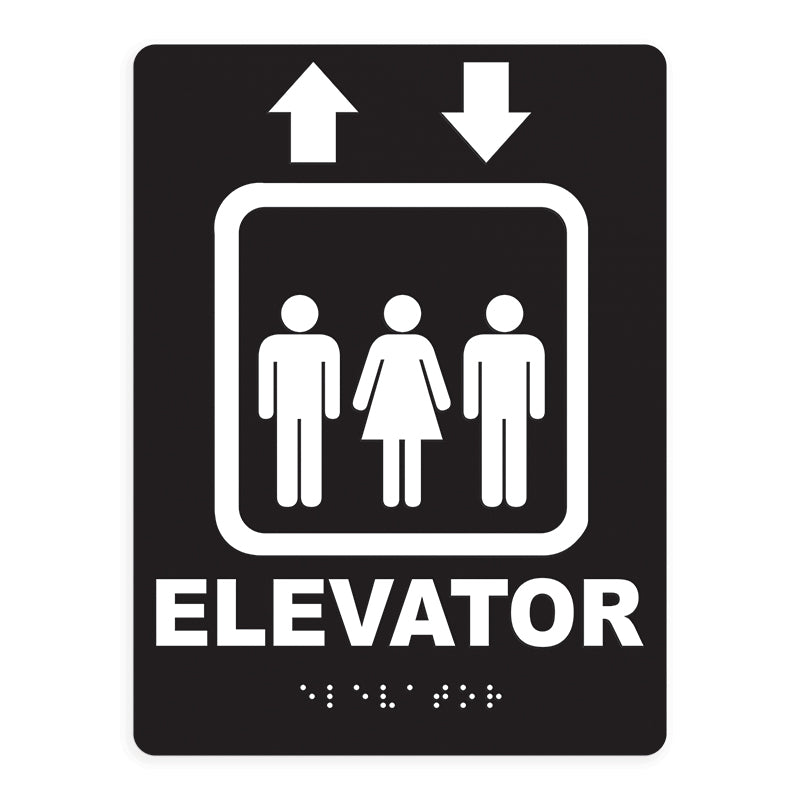How ADA Signs Improve Access for Everyone
How ADA Signs Improve Access for Everyone
Blog Article
Exploring the Key Features of ADA Indications for Boosted Access
In the world of accessibility, ADA indications offer as quiet yet powerful allies, making certain that spaces are inclusive and navigable for people with specials needs. By integrating Braille and tactile components, these signs break obstacles for the visually impaired, while high-contrast shade schemes and readable fonts cater to varied aesthetic needs.
Value of ADA Compliance
Guaranteeing conformity with the Americans with Disabilities Act (ADA) is important for cultivating inclusivity and equivalent gain access to in public rooms and workplaces. The ADA, enacted in 1990, mandates that all public facilities, employers, and transportation solutions suit people with specials needs, guaranteeing they appreciate the same civil liberties and possibilities as others. Conformity with ADA requirements not just meets lawful commitments but likewise improves a company's track record by demonstrating its commitment to diversity and inclusivity.
One of the essential elements of ADA compliance is the application of obtainable signs. ADA indicators are designed to ensure that individuals with impairments can quickly navigate through areas and buildings. These signs should comply with specific guidelines regarding dimension, typeface, shade comparison, and positioning to ensure exposure and readability for all. Appropriately carried out ADA signs assists eliminate barriers that individuals with disabilities often experience, thus promoting their freedom and confidence (ADA Signs).
Moreover, sticking to ADA regulations can minimize the threat of prospective penalties and lawful consequences. Organizations that fall short to abide by ADA standards might face penalties or legal actions, which can be both destructive and financially challenging to their public image. Thus, ADA compliance is integral to promoting an equitable setting for everybody.
Braille and Tactile Components
The unification of Braille and tactile aspects into ADA signage symbolizes the concepts of ease of access and inclusivity. These attributes are crucial for individuals who are blind or visually damaged, allowing them to navigate public spaces with higher freedom and self-confidence. Braille, a tactile writing system, is essential in giving created information in a style that can be conveniently regarded with touch. It is usually positioned below the matching message on signs to guarantee that people can access the details without visual support.
Tactile aspects prolong beyond Braille and include elevated characters and signs. These elements are made to be discernible by touch, enabling individuals to determine room numbers, restrooms, departures, and other essential locations. The ADA sets specific standards concerning the dimension, spacing, and placement of these responsive elements to maximize readability and ensure consistency throughout different settings.

High-Contrast Shade Schemes
High-contrast color design play a pivotal function in improving the exposure and readability of ADA signs for individuals with aesthetic problems. These systems are important as they optimize the difference in light reflectance between text and history, ensuring that signs are quickly discernible, also from a range. The Americans with Disabilities straight from the source Act (ADA) mandates using certain color contrasts to suit those with minimal vision, making it a crucial facet of compliance.
The efficiency of high-contrast colors lies in their ability to stand apart in numerous lights problems, consisting of dimly lit atmospheres and locations with glow. Typically, dark text on a light background or light text on a dark background is utilized to accomplish optimum comparison. As an example, black message on a white or yellow background provides a plain aesthetic distinction that assists in quick recognition and comprehension.

Legible Fonts and Text Dimension
When thinking about the style of ADA signage, the selection of legible font styles and proper message size can not be overemphasized. These aspects are vital for making sure that signs come to people with visual problems. The Americans with Disabilities Act (ADA) mandates that font styles should be not italic and sans-serif, oblique, script, very attractive, or of uncommon form. These needs aid guarantee that the message is easily readable from a distance which the personalities are distinct to diverse target markets.
According to ADA guidelines, the minimal text elevation must be 5/8 inch, and it needs to boost proportionally with viewing distance. Uniformity in message dimension adds to a cohesive aesthetic experience, assisting people in browsing settings successfully.
Moreover, spacing in between lines and letters is important to legibility. Adequate spacing stops personalities from appearing crowded, improving readability. By adhering to these standards, developers can dramatically boost ease of access, ensuring that signs offers its intended function for all people, regardless of their aesthetic capacities.
Efficient Positioning Techniques
Strategic positioning of ADA signs is crucial for making best use of accessibility and making sure conformity with lawful requirements. ADA guidelines stipulate that indicators need to be mounted at a height in between 48 to 60 inches from the ground to guarantee they are within the line of sight for both standing and seated individuals.
Furthermore, indicators need to be placed surrounding to the lock side of doors to enable easy identification before entry. Uniformity in indication placement throughout a facility improves predictability, reducing confusion and boosting overall user experience.

Final Thought
ADA indicators play a crucial function in advertising access by integrating features that deal with the needs of individuals with impairments. These aspects collectively foster an inclusive setting, underscoring the importance of ADA compliance in ensuring equivalent why not try here accessibility for all.
In the world of ease of access, ADA indications serve as silent yet effective allies, making certain that areas are navigable and inclusive for people with handicaps. The ADA, passed in 1990, mandates that all public centers, employers, and transportation solutions fit individuals with handicaps, ensuring they delight in the same civil liberties and possibilities as others. ADA Signs. ADA indications are designed to ensure that individuals with disabilities can conveniently navigate through structures and areas. ADA standards stipulate that signs must be installed at a height in between 48 to 60 inches from the ground to ensure they are within the line of view for both standing and seated individuals.ADA indicators play an important role in promoting access by incorporating functions that resolve the requirements of individuals with impairments
Report this page